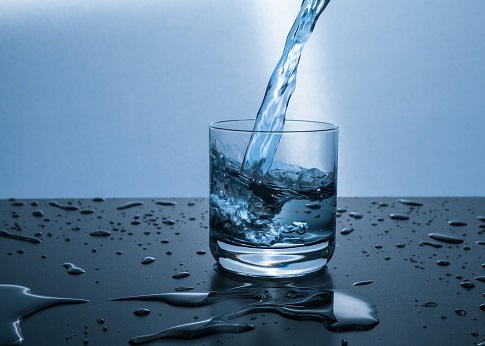Related News
Related News
-
EWEB Sets 2026 Budget and Rates, Advances Evaluation of McKenzie Valley Service Territory Realignment
Taken together, the 2026 budget and rate adjustments and the territory-realignment evaluation reflect EWEB’s dedication to responsible financial stewardship, modern, resilient utility infrastructure, and thoughtful planning for the future.
Find Out More -
Let's Talk Turkey. Is your family ready for winter?
We're heading into the holidays, but that also means snow, ice, and not-so-nice weather might be in the forecast. Here are some tips to prepare in advance.
Find Out More -
EWEB Hosts Annual Spill Drill to Protect McKenzie River
EWEB led emergency responders in its annual “spill drill” on the McKenzie River on Wednesday, Oct. 15, at the Trail Bridge Campground.
Find Out More -
A day in the life: Monitoring water quality throughout the McKenzie Watershed
Follow Senior Environmental Specialist David Donahue as he collects water quality samples from throughout the watershed as part of EWEB's early warning system for threats to Eugene's drinking water.
Find Out More -
EWEB Partners with Eugene School District 4J to Celebrate New Kennedy Middle School Emergency Water Station Site
Hundreds of attendees practiced filling up water containers at Saturday's demonstration event.
Find Out More -
Electric Projects underway in North & South Eugene
Underground lines and disaster-resilient power poles are part of EWEB’s infrastructure upgrade near Eugene’s largest natural resource area.
Find Out More -
Quartz Creek: Setting the Stage for Floodplain Restoration
The project resets the floodplain along 1.8 miles of a formerly channelized creek to improve water quality, fish habitat and natural disaster resiliency.
Find Out More -
Pure Water Partners: 5 Years of Regeneration
As EWEB and the Pure Water Partners observe the fifth anniversary of the Holiday Farm Fire, we celebrate major milestones in the watershed's recovery and check back in with PWP landowners who still have a lot of work ahead as they continue to rebuild their lives.
Find Out More -
Join the Pledge to Prepare
When you think about getting ready for an emergency, you probably have questions. You aren't alone. Preparing for emergencies can be overwhelming, which is why EWEB has put together a 12-month program to help you and your family get two weeks ready.
Find Out More -
You can’t predict the next disaster, but you can prepare
The earthquake lasted less than a minute. But now the power’s out. The tap runs dry. Cell service is spotty. Would you be ready?
Find Out More -
EWEB Celebrates Operators on the 75th Anniversary of the Hayden Bridge Filtration Plant
Learn more about the Water Treatment Plant Operators who have kept the Hayden Bridge Filtration Plant running for the last 75 years.
Find Out More -
NASA partners with EWEB to assess wildfire impacts to drinking water
NASA's Earth Information Center shares a new video detailing how EWEB's Drinking Water Source Protection work is advising new research tools
Find Out More -
EWEB prepares for wildfire season with risk mitigation measures
EWEB is building a more resilient electric system to weather various types of disasters, from wildfire to winter storms.
Find Out More -
EWEB environmental specialist wins prestigious awards for publication
Article recounting EWEB’s efforts to protect the McKenzie River after Holiday Farm Fire earns national recognition
Find Out More -
Last Call for EWEB/Lane County Septic Grants
Holiday Farm Fire recovery program now eligible for businesses, residential property owners who purchased post-fire, to cover inspection costs and new construction
Find Out More - Show More
EWEB Moving Forward with Emergency Water Supply Program
August 09, 2017

EWEB management received clear direction at the Aug. 1 Board of Commissioners' meeting: when it comes to disaster planning and recovery, the utility's first priority should be emergency water distribution.
A reliable supply of clean water is vital to public health, safety, and our economy, especially in an emergency. An emergency water supply program would focus on developing our capabilities to deliver water at a number of permanent distribution sites designated as Community Points of Distribution (CPOD). These CPODs were identified by the county as the locations where emergency resources including food, medical aid and shelter would be available following a disaster.
The water would come from existing or new wells—a handful of schools, including Sheldon and North Eugene already have existing wells and others have pending water rights for wells. Each distribution site would be configured as a joint water and electric facility with the following infrastructure:
- An existing, new, or refurbished well
- A water treatment system
- A standby generator system
- A microgrid system to provide reliable standby power
- A building to house piping and equipment
This solution would supplement other emergency supply efforts already underway, including:
- Portable treatment trailer - We have purchased the components and plan to start construction on a treatment trailer later in 2017.
- Water distribution trailers - We currently have three trailers than can be hooked up to a functioning, pressurized potable water supply and deliver water from 100 nozzles.
- Delivered water - We currently have one 500-gallon and two 2,000-gallon blivets (a collapsible rubber bladder used to transport liquids) ready for deployment.
Commissioners directed staff to work with school districts, public agencies, other utilities and perhaps private industry to identify ground wells and other potential water sources, and indicated a sense of urgency to develop an emergency water supply program as soon as possible.
"Thousands of lives depend on our ability to deliver drinking water in short-order following a disaster," said Commissioner John Brown.
EWEB has been working on developing alternative water sources for a number of years. After receiving a water permit on the Willamette River, we have been moving ahead with plans to construct a second filtration plant in case a natural or human-caused disaster compromises our primary water source on the McKenzie River or our Hayden Bridge filtration plant operation. While commissioners indicated continued interest in a second filtration plant on the Willamette at some point in the future, they instructed staff to postpone planning and funding for that work at this time. The Board directed staff to move forward with planning a 2018 budget that assumes the utility will rescind a three percent water rate increase that commissioners approved in 2014 specifically to fund planning and construction of a second treatment plant.
"There are roles the Willamette plant will play with respect to disaster recovery and other scenarios, but we have heard feedback from the board that we need to focus on life safety and show progress and results at a faster pace," said General Manager Frank Lawson. "Through partnerships with schools and other utilities, we can implement an alternative water source and a water reliability plan in a way that gives us the most flexibility and the quickest results."
Work on an emergency water supply is a piece of our overall Water Reliability Initiative. Infrastructure projects include replacing water mains, upgrading interties, upgrading or building new reservoirs, adding backup electrical power to pump stations, and renovating our Hayden Bridge water filtration plant.
Learn more about preparing your home and family for an emergency.

